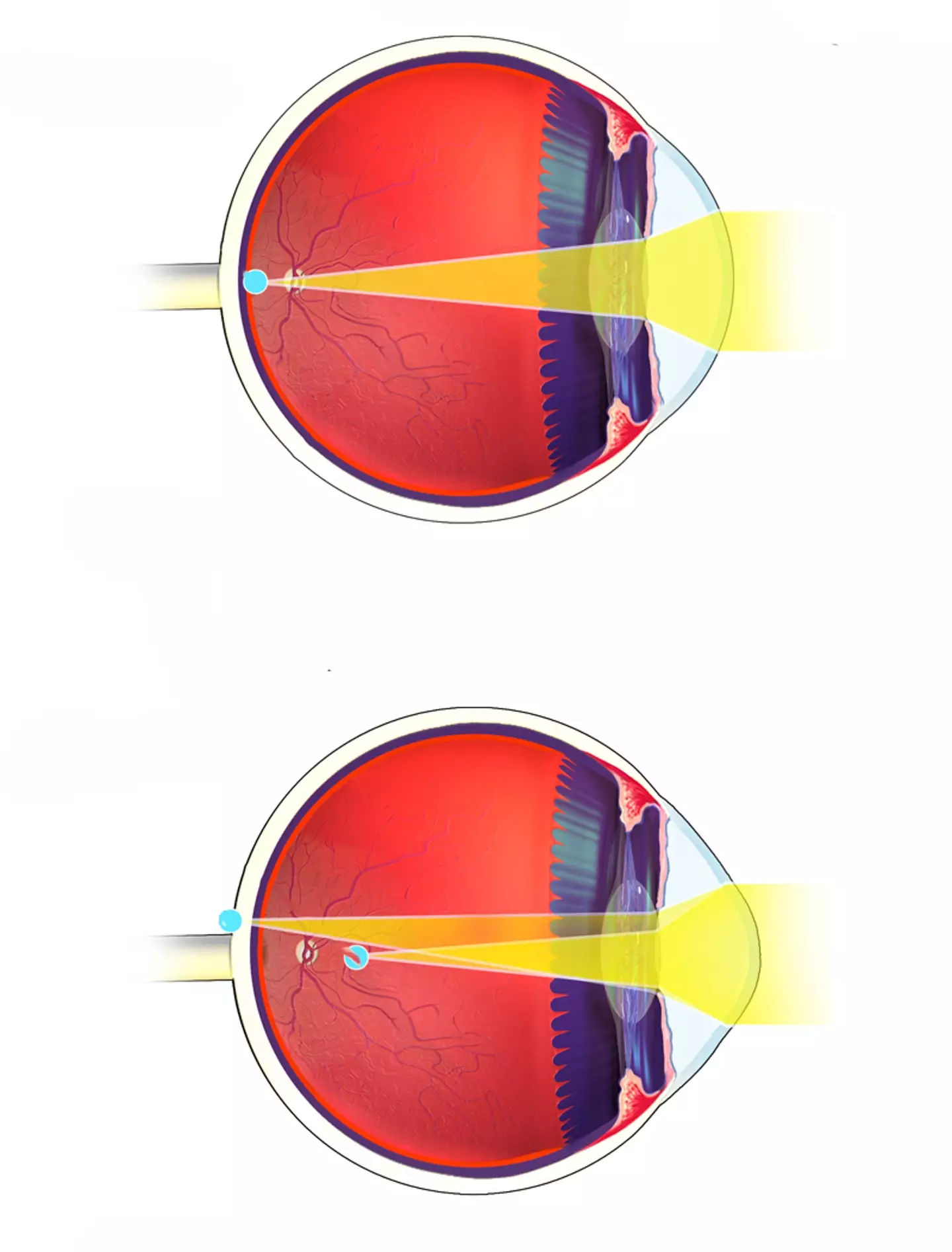Have you ever noticed rays of light emanating from light sources in your vision?
Many people assume this visual phenomenon is something everyone experiences.
However, this isn’t the case. You might be among the one-third of the U.S. population affected by a particular eye condition.
This condition is characterized by symptoms including the need to squint for better vision, experiencing headaches, and seeing blurry images.
The blurry vision particularly is what leads to the perception of light beams emanating from sources like light bulbs.
This effect was highlighted in a photo posted on the subreddit r/InterestingAsF**k.

The image captures the appearance of streaks of light streaming from the bulbs in a crowded restaurant, depicting what individuals with astigmatism often see.
Astigmatism occurs due to an irregular shape of the cornea (the clear, front layer of the eye) or the lens inside the eye.
While most people have spherical eyeballs, those with astigmatism often have eyes shaped more like an American football, compared to a more spherical European football.
In mild cases, astigmatism might not cause noticeable symptoms, but the unusual shape of the cornea or lens can lead to light bending differently as it enters the eye.
A Reddit user with astigmatism shared their experience: “I always thought this was normal. Like when it rains at night I [would] look at the street lights and they would look like big red and green stars stretching further because of the [rain] drops on the windshield. Then I found out I have astigmatism, crazy to think not everyone sees the glare.”

Although dealing with astigmatism can be bothersome, it is not usually a cause for concern.
This common condition can be congenital or develop after an injury, illness, or surgery. The exact reason why corneal or lens shapes vary isn’t completely understood, but genetics play a role in your risk.
To determine if you have astigmatism, an optician can administer an eye exam. This may involve tests like reading an eye chart or using a device called a ‘phoropter’ to determine which lenses help you see better.
Other diagnostic tools might include an autorefractor, which shines a light into the eye, and a keratometer, which measures the curvature of your cornea.
If diagnosed, astigmatism can be corrected with eyeglasses, contact lenses, or even surgery to alter the corneal shape.
However, if your astigmatism is mild, you might not need any treatment at all.

